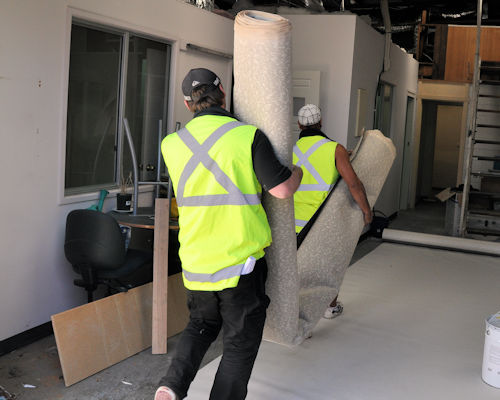Preparing the work area
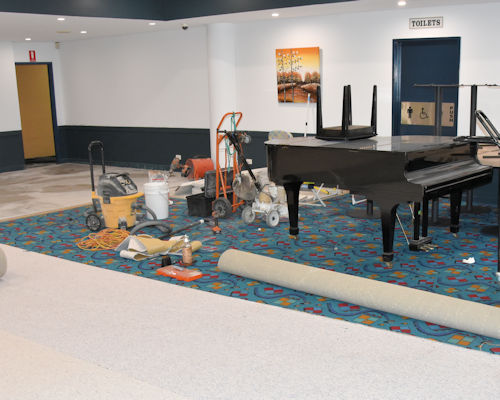 Audio for slide 1 (mp3 |6|KB)
Audio for slide 1 (mp3 |6|KB)
The way you prepare the work area and accessways for the take-up will depend on the size of the task and the worksite you're at.
On a small project, you might be responsible for the entire installation, including the floor prep and new floor coverings.
On a large project, however, you might be working as part of a team, with each person having their own designated tasks.
This might mean that once an area is ready for the floor prep and installation work to begin, the other team members would go on with that stage of the job while you continue to work ahead of them.

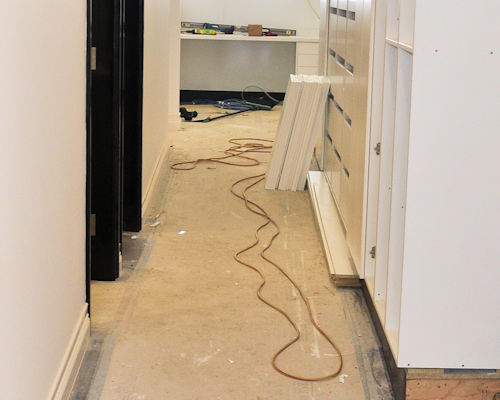 Audio for slide 3 (mp3 |6|KB)
Audio for slide 3 (mp3 |6|KB)
Trip hazards
When you're pulling up old floor coverings and fixings, it's easy to forget how much of a trip hazard you're creating around you - until someone trips, of course.
Remember, you've not only got to think about your own safety, there may also be other people walking through hallways or rooms that you're working in.
Make sure you keep thoroughfares clear of any trip hazards, including old floor coverings, debris, metal mouldings, power leads, tools, and any other items left on the floor.
Be particularly careful with items that have sharp edges or points, such as gripper strips, nails in battens or metal fittings.

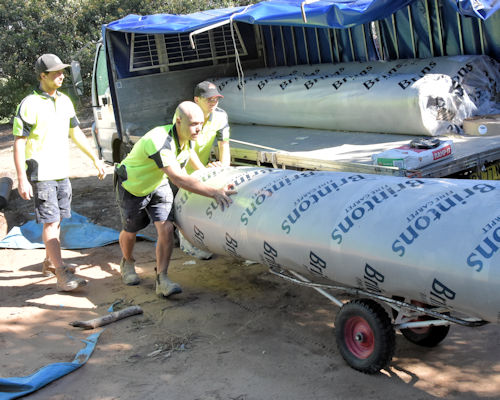 Audio for slide 4 (mp3 |6|KB)
Audio for slide 4 (mp3 |6|KB)
Use a trolley or cart to move heavy items.
If an item is too heavy for you to handle on your own, make sure you ask for assistance.
It's much more efficient for everyone in the long run if you take a bit of extra time to do the job safely and sensibly, rather than suffer an injury that either slows you down or puts you out of action completely.

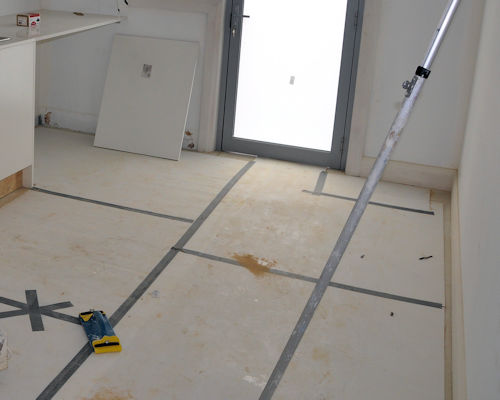 Audio for slide 5 (mp3 |6|KB)
Audio for slide 5 (mp3 |6|KB)
Protecting existing floors
It you find that the room you're working in doesn't have direct access to the outside of the building, you may end up having to move materials through areas that already have finished floors in place.
This means that you'll need to protect those floors from damage and soiling as you go back and forth.
Plywood sheets can be used to cover carpeted floors, especially if you're going to be wheeling heavy trolleys over them.
Plastic sheeting is suitable if you'll be carrying all items.


Learning activity
Audio 6 (mp3 |6|KB)The worker in the photo below is replacing the carpet in a set of ground floor apartments in an aged care facility. As he takes up the old carpet, he carries the rolls out to his ute and puts them on the back.
At the end of each day, he takes a load back to the warehouse for disposal - although sometimes he has to leave rolls of old carpet and rubbish on the lawn if they won't all fit into his ute.
How would you improve the efficiency of this job?
Let's say there were several apartments to take up and none of them are occupied. You can also assume that you have access to other workers, vehicles and equipment.
What would be a cost-effective method for taking up the old carpet, and what arrangements would you need to make? Write your answers down in the workbook.







